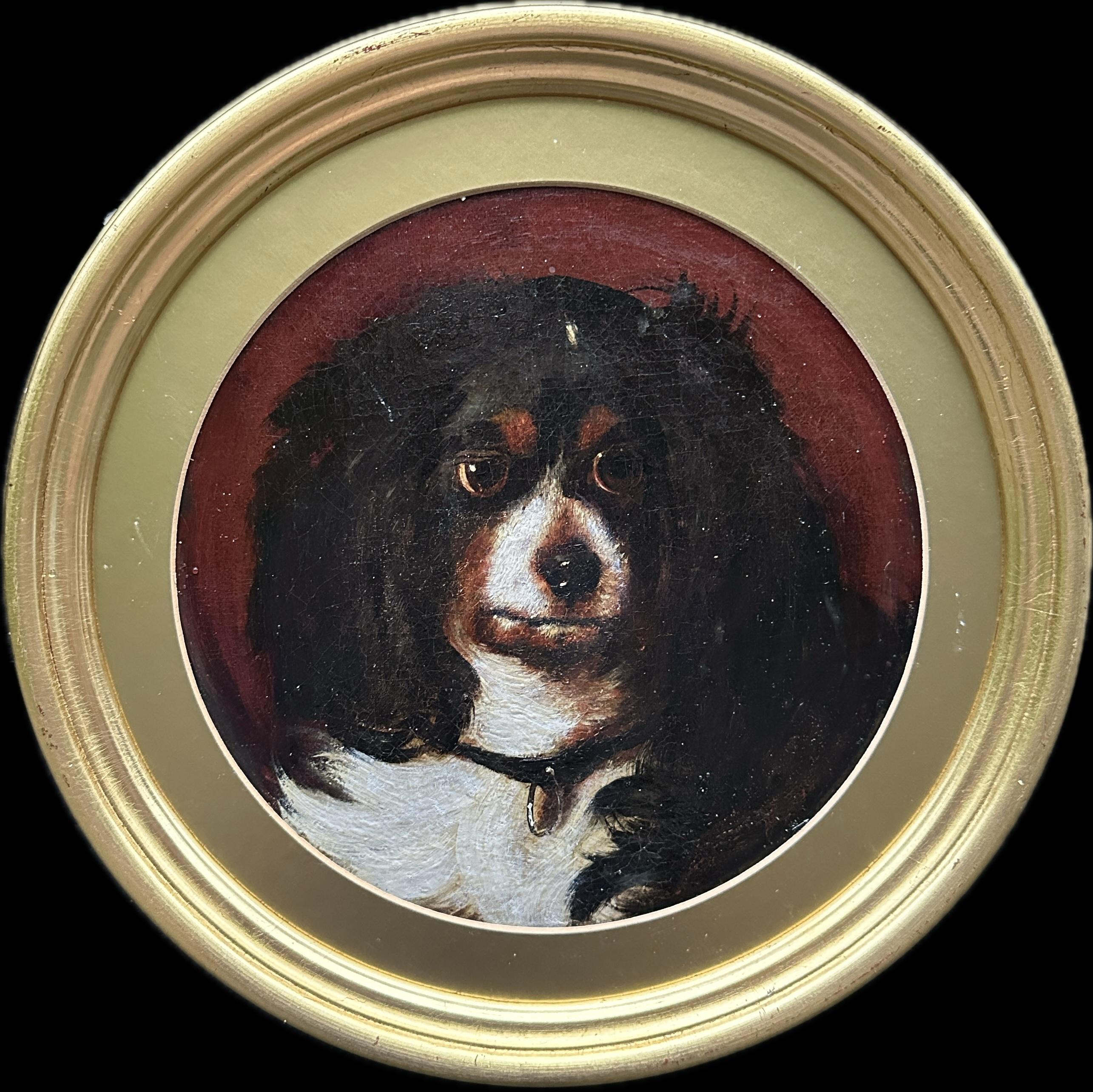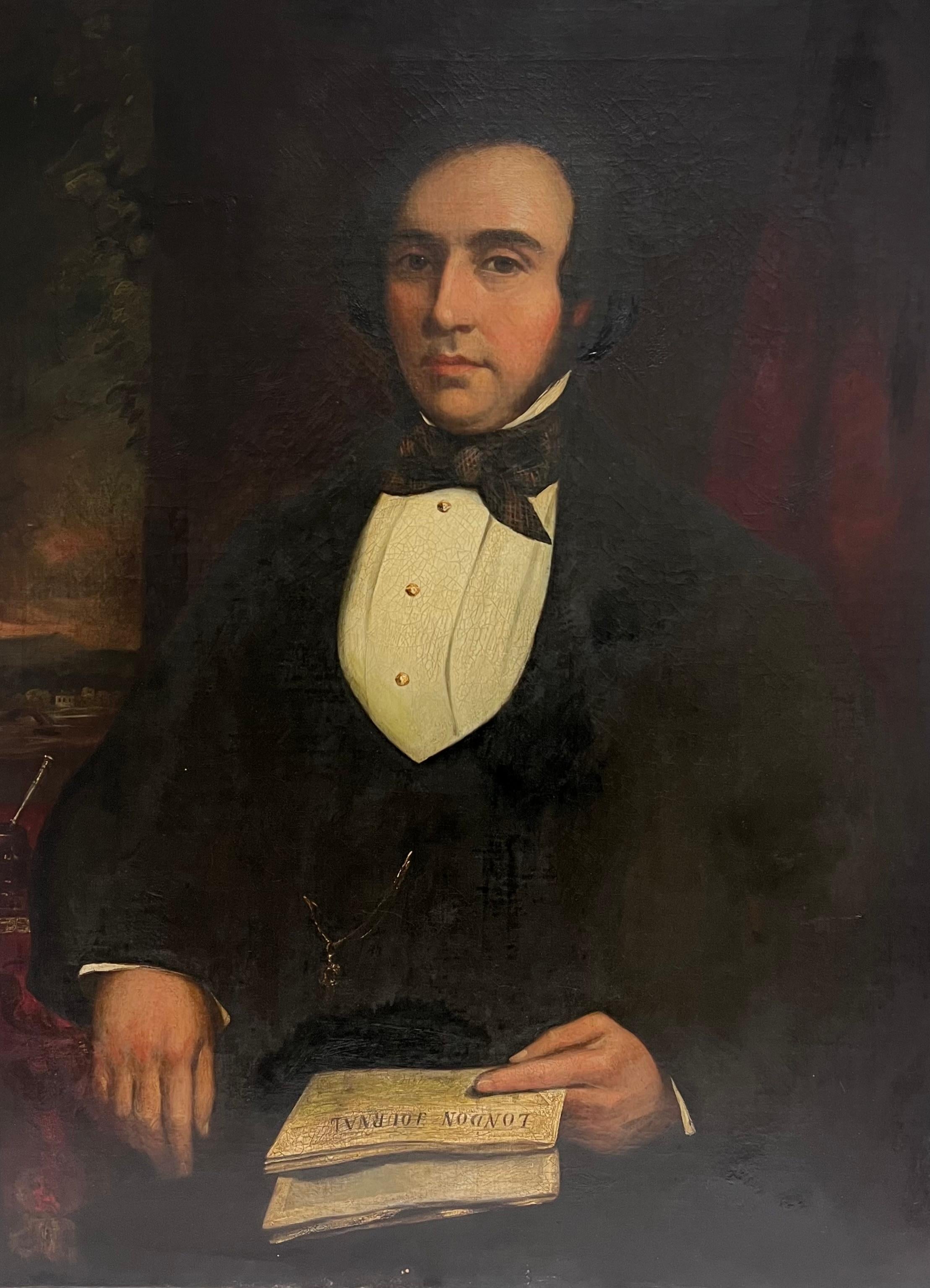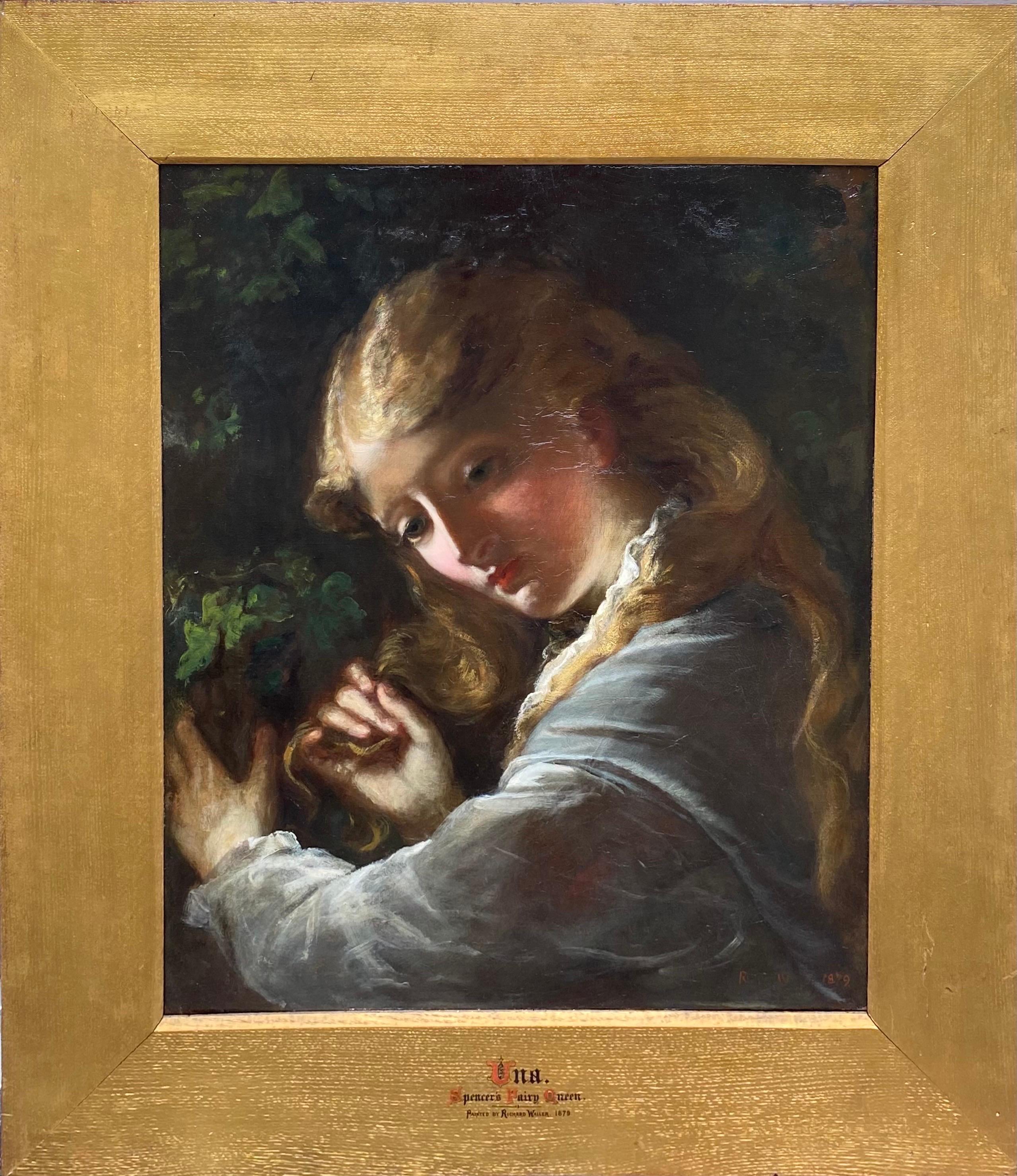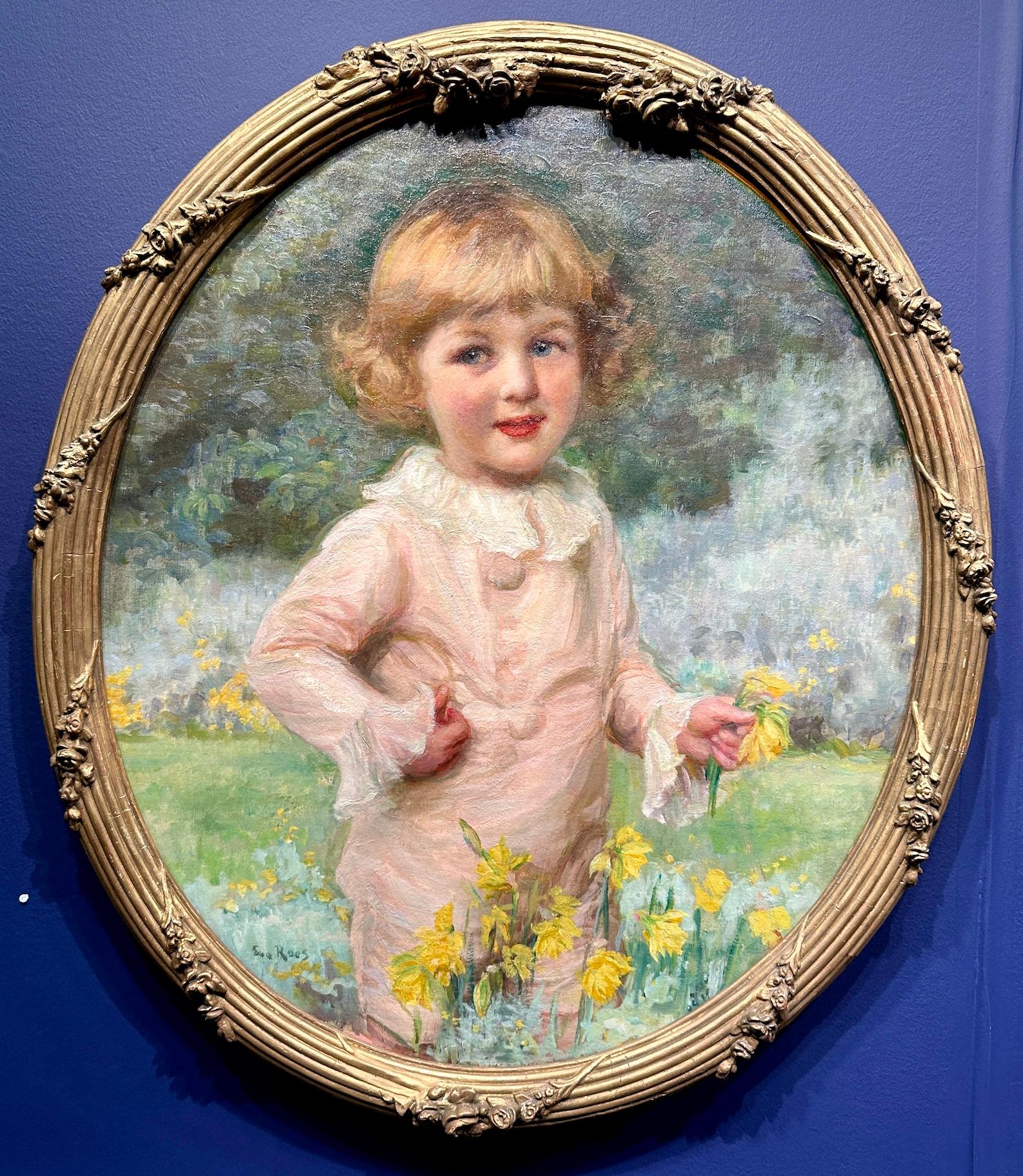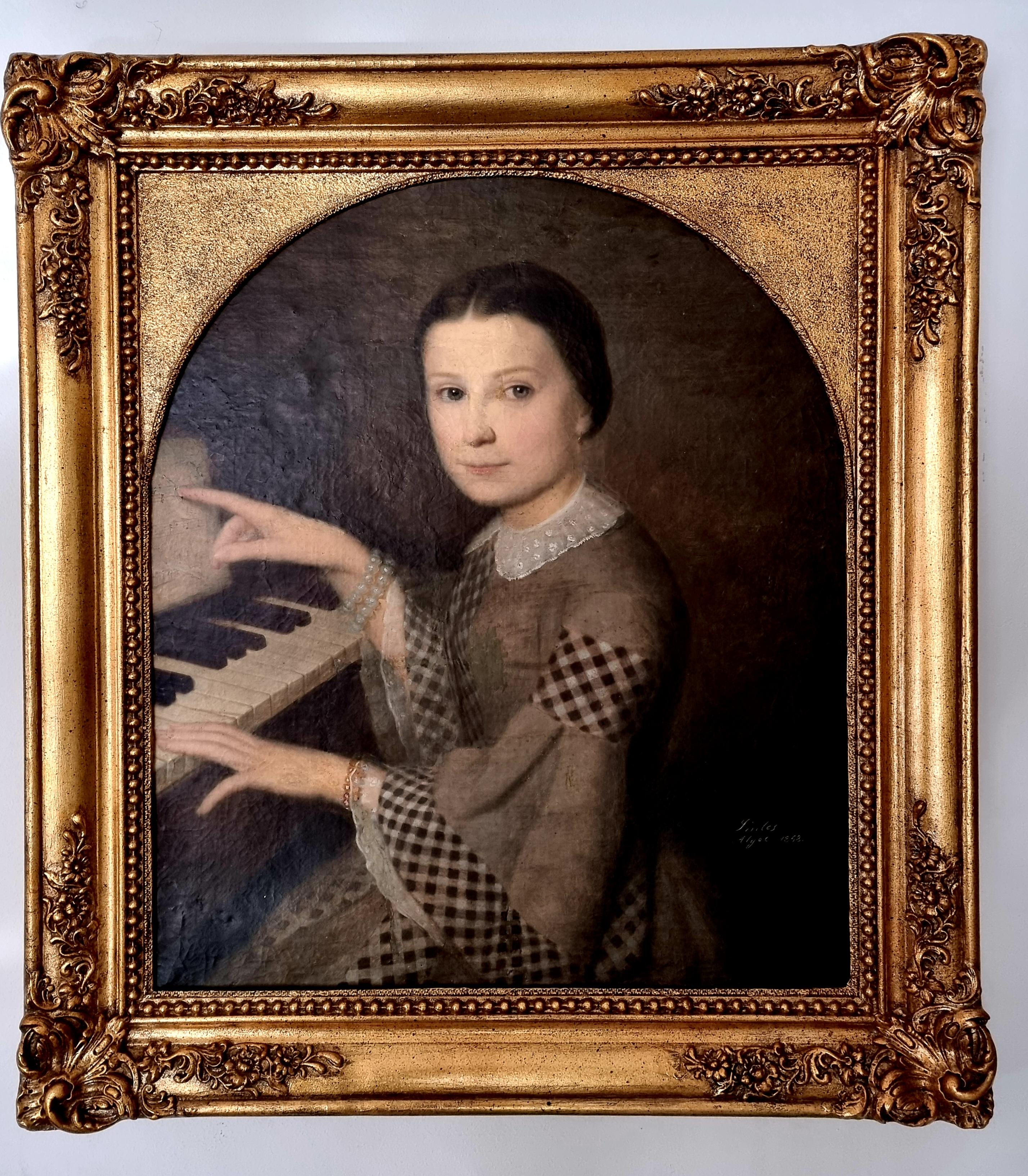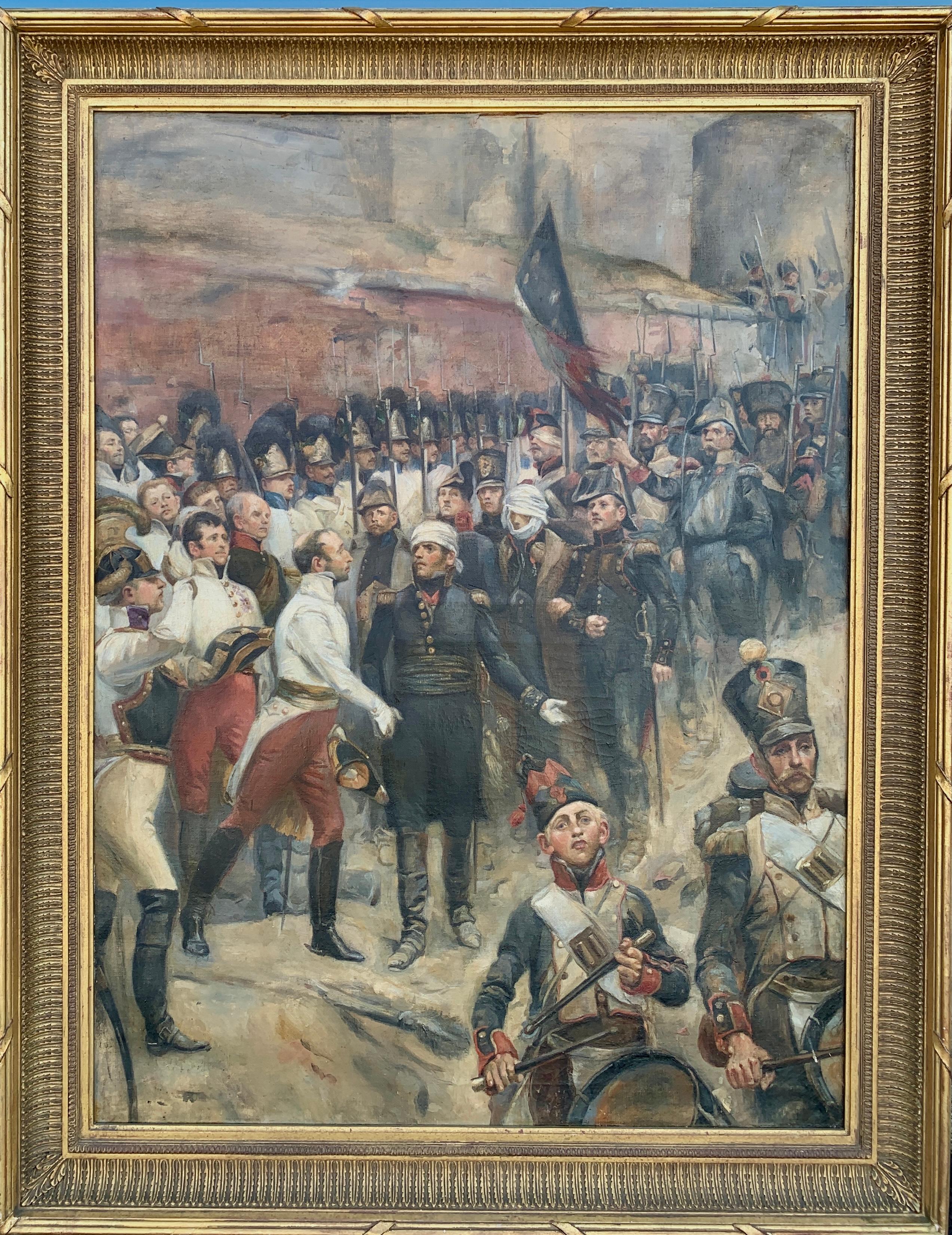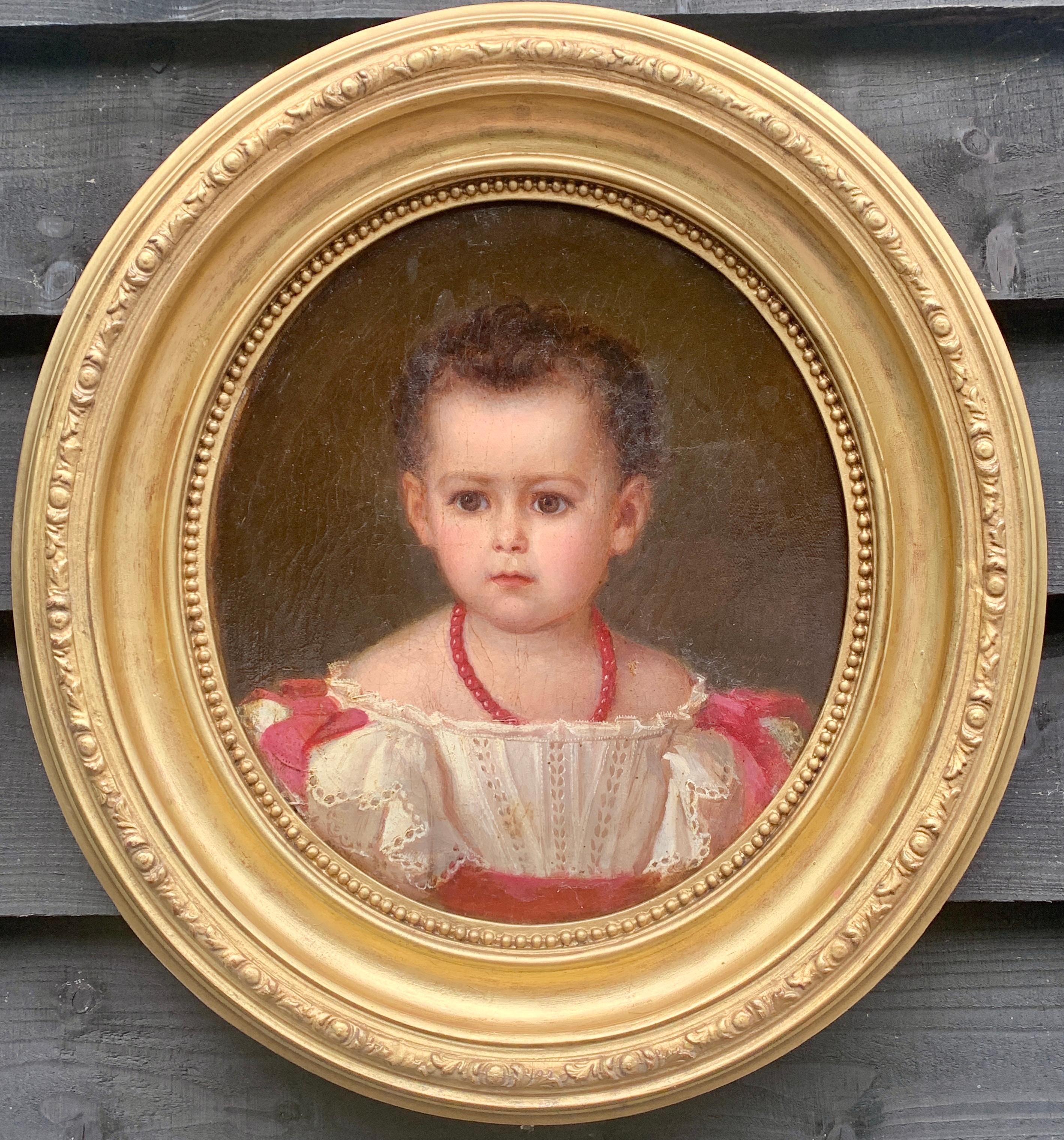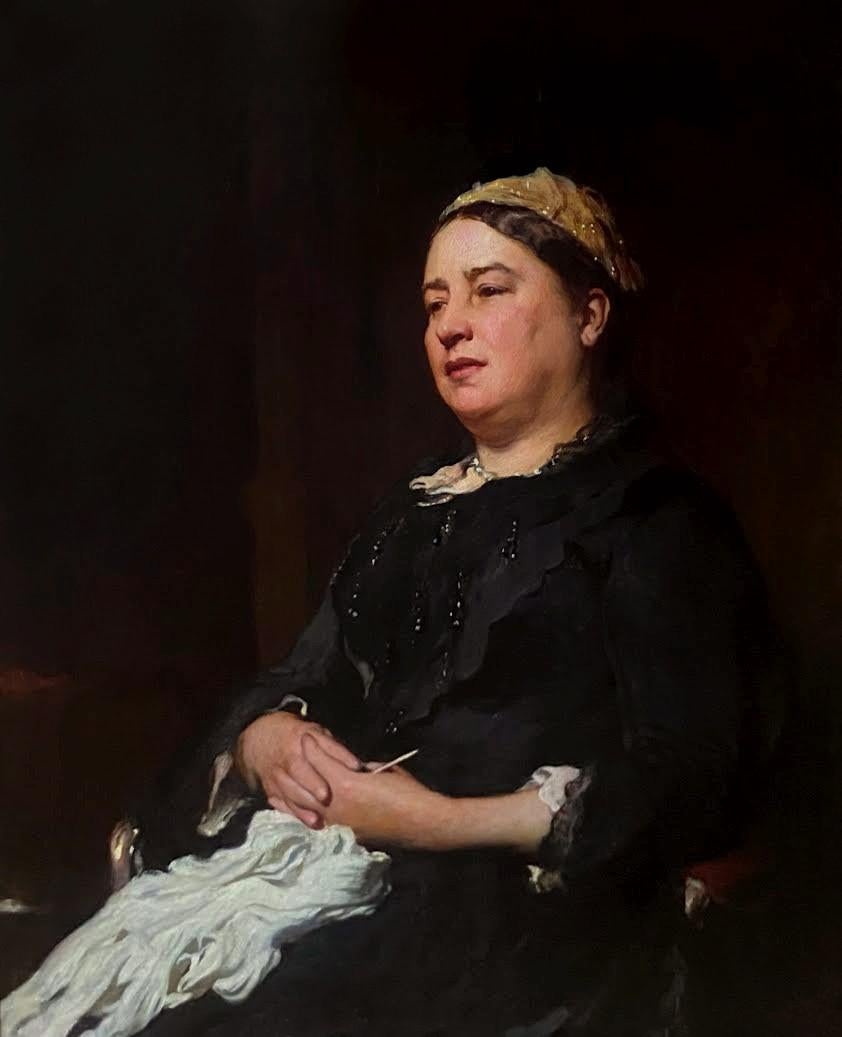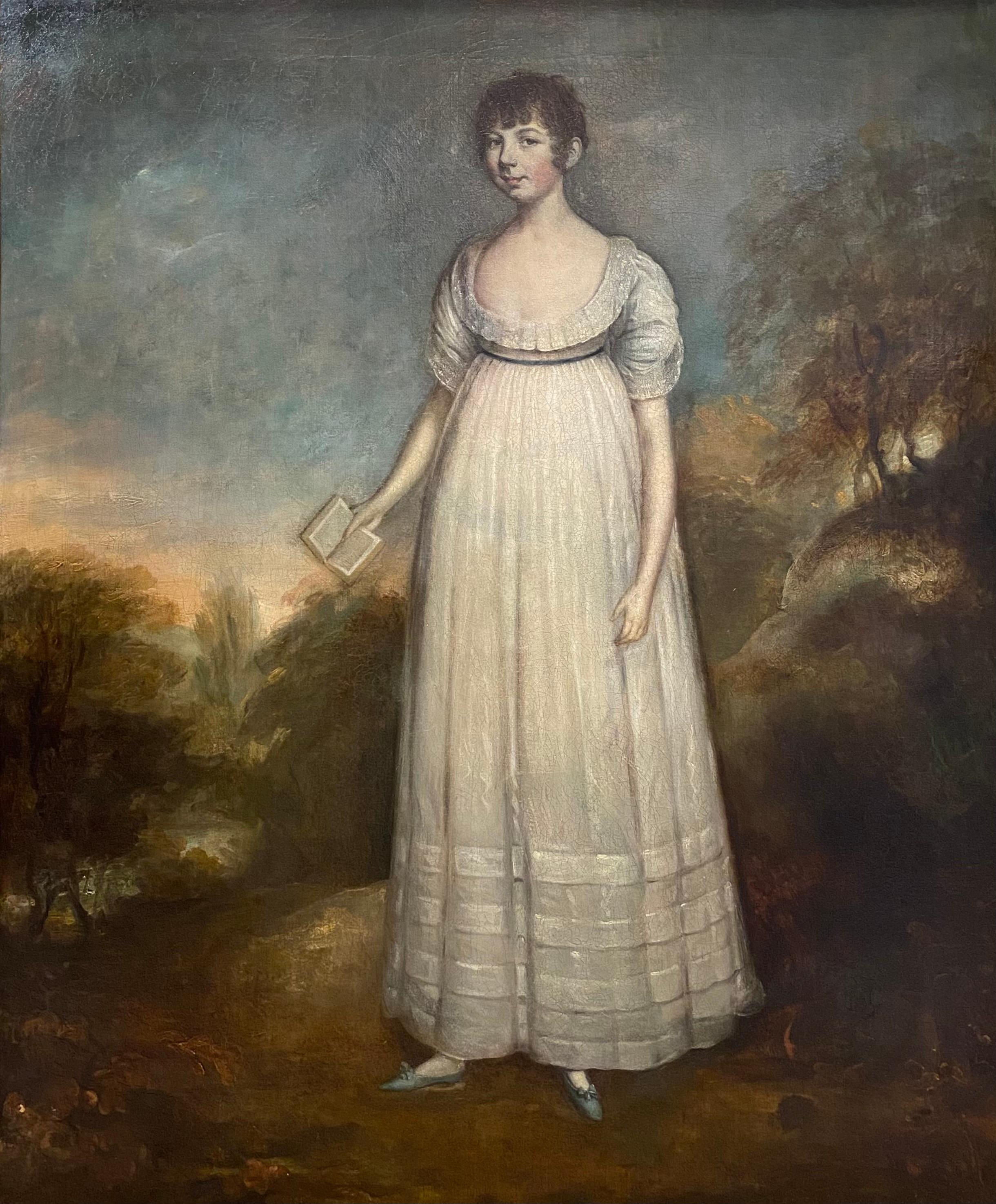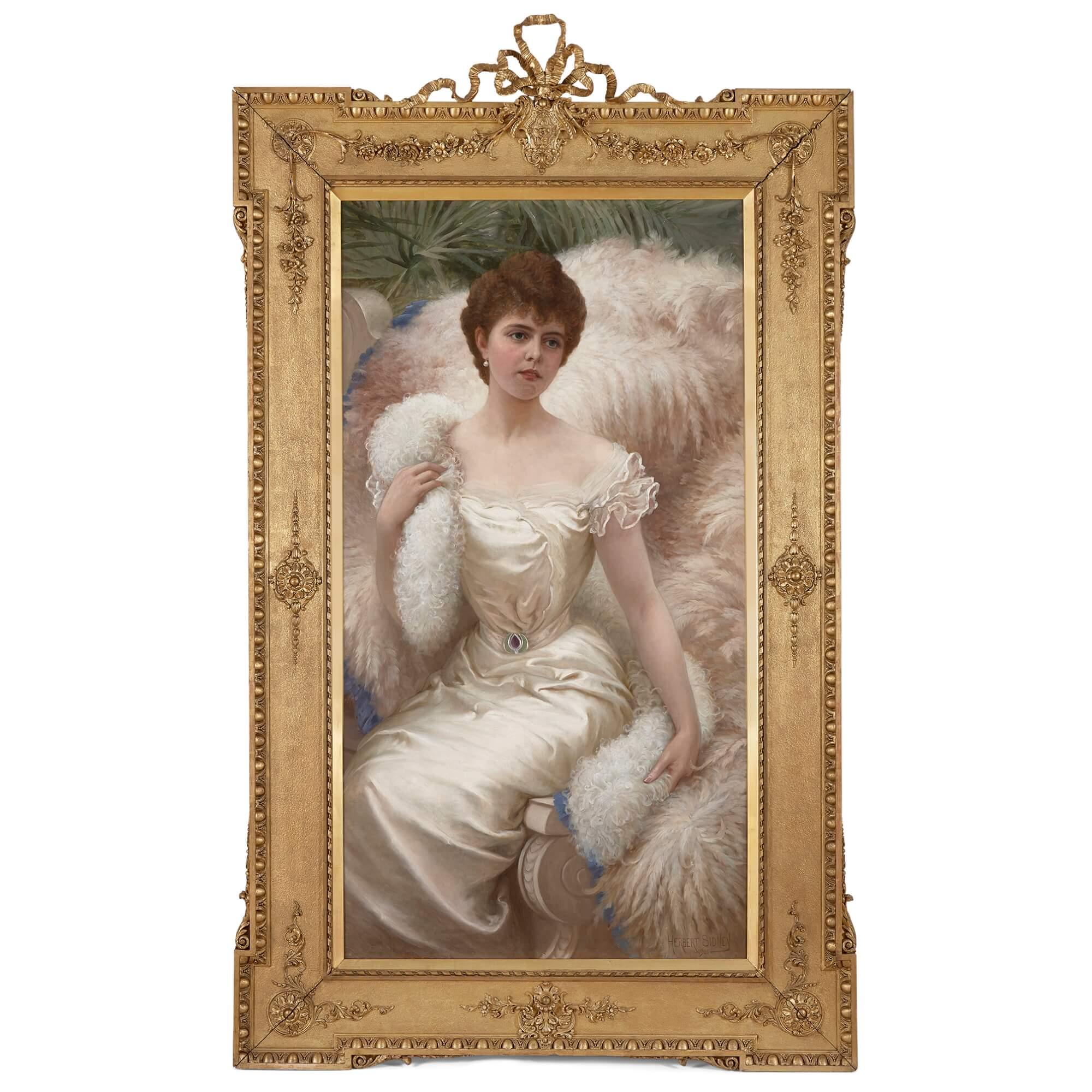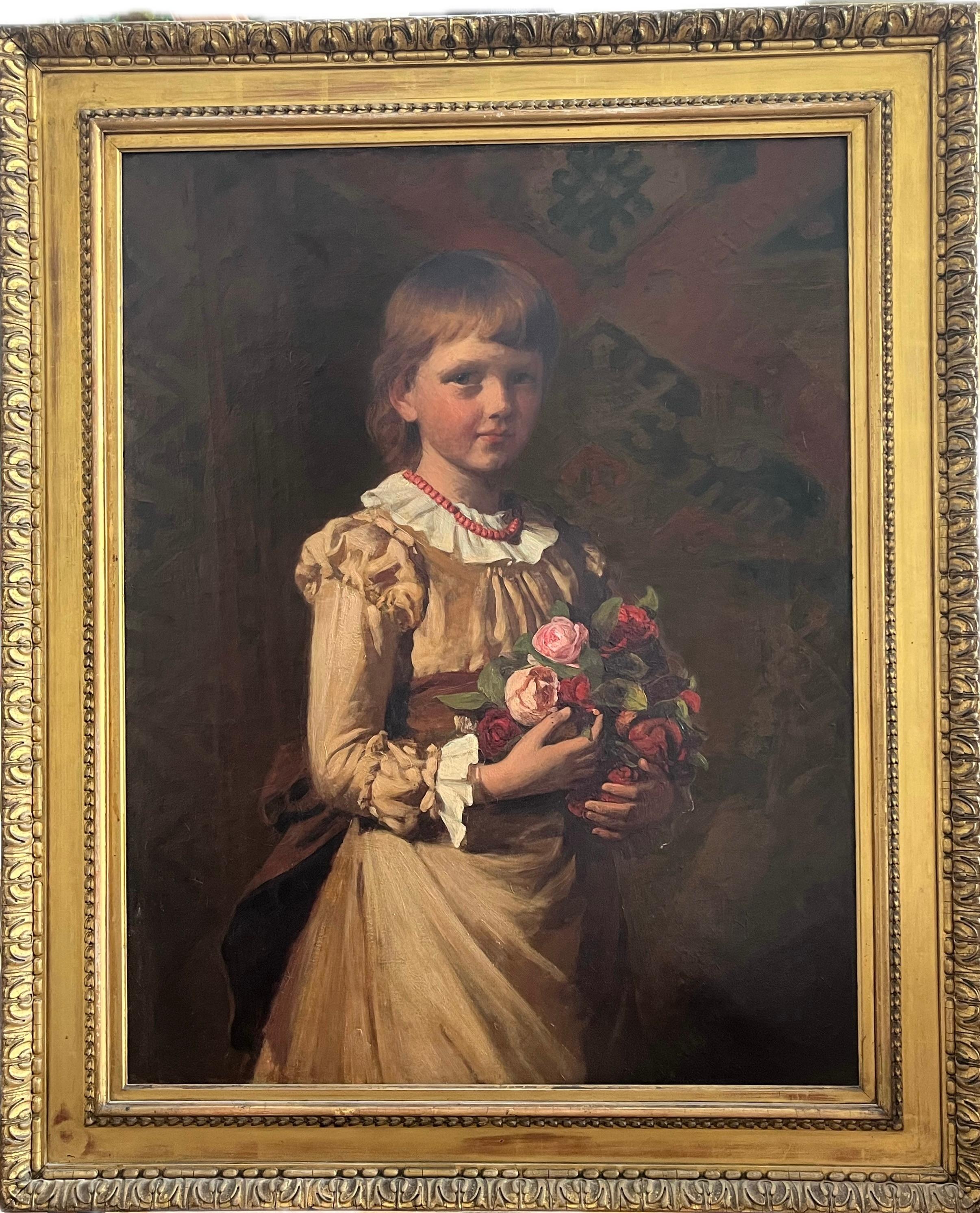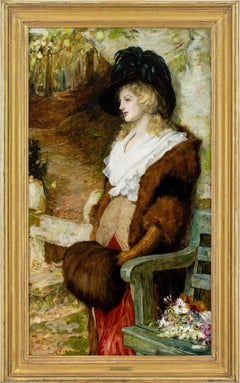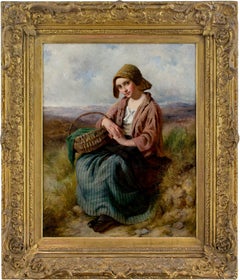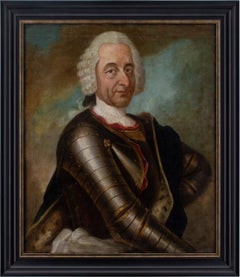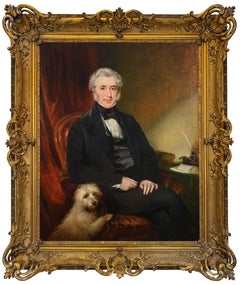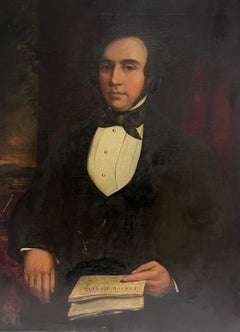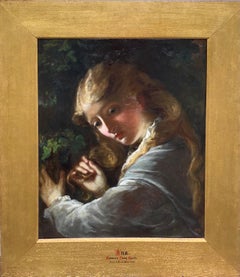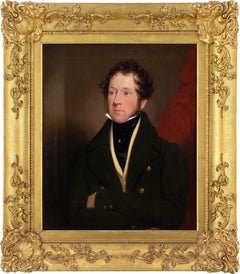
19th-Century English School, Portrait Of William Lewis Henning
View Similar Items
Want more images or videos?
Request additional images or videos from the seller
1 of 12
Unknown19th-Century English School, Portrait Of William Lewis Henningc. 1845
c. 1845
About the Item
- Creation Year:c. 1845
- Dimensions:Height: 41.5 in (105.41 cm)Width: 36.5 in (92.71 cm)
- Medium:
- Movement & Style:
- Period:
- Condition:Artwork presents well. Fine craquelure but the paint is stable. Frame with some light wear.
- Gallery Location:Cheltenham, GB
- Reference Number:1stDibs: LU2328213543532
About the Seller
5.0
Platinum Seller
Premium sellers with a 4.7+ rating and 24-hour response times
Established in 2017
1stDibs seller since 2023
233 sales on 1stDibs
Typical response time: 2 hours
Authenticity Guarantee
In the unlikely event there’s an issue with an item’s authenticity, contact us within 1 year for a full refund. DetailsMoney-Back Guarantee
If your item is not as described, is damaged in transit, or does not arrive, contact us within 7 days for a full refund. Details24-Hour Cancellation
You have a 24-hour grace period in which to reconsider your purchase, with no questions asked.Vetted Professional Sellers
Our world-class sellers must adhere to strict standards for service and quality, maintaining the integrity of our listings.Price-Match Guarantee
If you find that a seller listed the same item for a lower price elsewhere, we’ll match it.Trusted Global Delivery
Our best-in-class carrier network provides specialized shipping options worldwide, including custom delivery.More From This Seller
View AllRobert Walker Macbeth RA ROI RWS, Far From The Madding Crowd
Located in Cheltenham, GB
This spellbinding late 19th-century oil painting by Scottish artist Robert Walker Macbeth RA ROI RWS (1848-1910) depicts a young woman wearing...
Category
1880s Victorian Portrait Paintings
Materials
Canvas, Oil
Edward John Cobbett RBA (Attributed), Portrait Of A Girl In A Landscape
Located in Cheltenham, GB
This charming mid-19th-century oil painting attributed to English artist Edward John Cobbett (1815-1899) depicts a seated girl carrying a wicker basket within rolling scenery. Cobbett was a skilled English painter of landscapes and genre who exhibited regularly at London’s Royal Academy.
This piece from around 1860 is emblematic of his rose-tinted escapism and celebrates the honest endeavours of rural life. The details are rendered skilfully, particularly the hands, skin tones and head. While the composition, with the horizon line crossing just beneath the shoulders, creates interest and permanence. He fathered twelve children, including eight daughters, so it’s plausible that some of them appeared in his portraits. The girl bears some resemblance to his depiction of ‘The Crofter's Daughter’.
Born in Westminster, London, Cobbett was initially trained as a wood carver, probably by his father, who was a skilled ‘carver and gilder’. Evidently, the young man adopted the trade with considerable vigour, as some of his early carvings can be seen at York Minster.
Around the age of 20, he began to pursue a career as an artist, and it's presumably at this point that he undertook formal tuition with the landscape painter Joseph William Allen (1803-1852). Allen was a founding member of the Society of British Artists, and his influence is evident.
Following his 1833 debut at London’s Royal Academy, he matured into an artist of considerable merit, particularly popular among the rising middle classes. He was known by the Victorian press as one of the last great ‘bohemians’, thus associating him with a social and cultural milieu of freedom-loving, anti-establishment creatives. As a member of London’s Savage Club, his circle was a most intriguing one and included writers, artists, and musicians who sought to live on the fringes of society.
This liberal sense of ‘joie de vivre’ translated through his work into depictions of ebullient country folk undertaking wholesome daily activities. Via his numerous rustic characters, he celebrated a simpler, albeit idealised, working-class utopia. The urban-dwelling bourgeois lapped it up, escaping into the abundance of an imagined moor, and vanishing into a community unplagued by formal rigour.
Aside from the Royal Academy, his works were also shown at the British Institution, Liverpool Academy, and the Society of British Artists, where he was elected a member in 1856. He’s known to have collaborated with both William Shayer (1787-1879) and George Cole (1810-1883).
He’s represented in numerous public collections, including at Glasgow Museum, the Walker Art Gallery, Worcester City Art Gallery, and York Art Gallery.
Provenance: Private collection, UK.
Artist’s auction maximum: £20,052 for ‘Rural Idyll (1859)’, Oil on canvas, De Veres...
Category
1860s Victorian Portrait Paintings
Materials
Oil, Board
Jelle Troelstra, Portrait Of A Seated Woman, Oil Painting
Located in Cheltenham, GB
This early 20th-century oil painting by Dutch artist Jelle Troelstra (1891-1979) depicts a seated woman wearing a floral top and dark grey dress.
With eyes closed and hands held upo...
Category
1910s Post-Impressionist Portrait Paintings
Materials
Canvas, Oil
Mid-18th-Century German School, Portrait Of An Aristocrat In Armour
Located in Cheltenham, GB
This mid-18th-century half-length German portrait depicts a middle-aged aristocrat wearing armour and a wig.
Despite his heavily-clad appearance, it’s likely that this rather noncha...
Category
1750s Old Masters Portrait Paintings
Materials
Oil, Canvas
Late 19th-Century French School, Head Study
Located in Cheltenham, GB
This enchanting late 19th-century French oil painting depicts the head of a bearded man.
Rendered with an abundance of consideration and feeling, the introspection of the figure po...
Category
1890s French School Portrait Paintings
Materials
Oil, Canvas
George Clint ARA (Attributed), Portrait Of A Lady In A Brown Dress
Located in Cheltenham, GB
This early 19th-century half-length portrait attributed to British artist George Clint ARA (1770-1854) depicts a young lady wearing a beautiful brown dress, bonnet decorated with small flowers, gold earrings and coral necklace. Clint was a distinguished painter and mezzotint engraver predominantly known for portraiture and dramatic scenes.
Set before an evocative classically-inspired backdrop, she looks out from across the centuries with a composed demeanour. Adorned in the latest fashions, oversized ‘gigot’ sleeves, a delicately-poised bonnet, and a coral necklace for good luck. It’s a charming portrayal by a masterful hand.
Born at Drury Lane, in the heart of London’s West End, George Clint was destined to lead an exuberant life amid the spectacle of theatreland. His father, Michael Clint, was a hairdresser during a time of “hair pomatum, whalebone, wire, lace gauze, and feathers” - so young George would have encountered a variety of ‘characters’ during his childhood.
But despite these elevated surroundings, he soon discovered the darker side of London when thrust into the world of employment. Apprenticed initially as a fishmonger, he trained under a ferocious master who was known to beat him. The hours were unsocial, the conditions rank, and the work was brutal. He soon quit but subsequently found himself toiling for a corrupt attorney who demanded he undertake unscrupulous acts on his behalf.
Seeking a less volatile role, he turned next to house painting, at which he excelled. Commissioned, among other projects, to paint the stones of the arches in the nave of Westminster Abbey. Aside from an incident whereby he almost fell from the second story of a building, all was going well.
Following his marriage in 1792 to Sarah Coxhead, a farmer’s daughter, he began work in earnest as a painter of miniatures, determined to forge a career. Robert William Buss’ memoir celebrates Clint’s success as a miniaturist, stating that “great manual excellence was united with that chaste, delicate feeling for female beauty which characterised all Mr. Clint's portraits of ladies.”
Until this point, it appears he was predominantly self-taught, presumably constrained by a lack of finances. But from hereon in, his industrious nature coupled with several fortunate encounters, led to him developing an enviable talent for both painting and engraving. During the early 19th-century, the acquaintances one kept could make or break your fortunes and perhaps acutely aware of this, Clint’s ‘society’ was an ever-evolving circle of influential personalities.
He was “initiated into the mysteries of engraving” by Edward Bell (act.1794-1819) and produced numerous works after the foremost artists, such as George Stubbs, John Hoppner, and Thomas Lawrence. Following a commission from Lawrence, he struck up a long-term friendship.
Admired for his skill as a mezzotint engraver, he sought next to hone his technique in oils and, as with many aspiring portraitists, his first work in this respect was a depiction of his beloved wife. The pair were both delighted with it, yet over time Clint began to doubt himself and sought the validation of a superior hand - that of Sir William Beechey (1753-1839). However, paralysed with insecurity, he couldn’t face the potential criticism, so his wife took it instead - “with a child under one arm and the portrait in the other”. The result was immeasurably more positive than he’d envisaged and he became closely associated with Beechey until his death in 1839.
Numerous commissions followed from the landed gentry including Lord Egremont, Lord Spencer, and Lord Essex. But also from the theatrical community who would fill his studio at 83 Gower Street, Bloomsbury. His connections within the world of acting led to notable works such as ‘Malvolio and Sir Toby’ (from William Shakespeare's 'Twelfth Night', Act II, Scene iii)’ and ‘Harriet Smithson as Miss Dorillon, in Wives as They Were, and Maids as They Are’.
While his efforts in mezzotint included several contributions to JMW Turner’s Liber Studiorum.
As a measure of his success, Clint was elected an Associate of the Royal Academy in 1821 - a position he later relinquished for personal reasons. Today, he’s represented in numerous public collections including at The British Museum, Harvard Art Museums, The Met, V&A, Yale Center for British Art, and the National Portrait Gallery.
“The respect in which he was held, not only by his brother artists, but by an immense number of eminent men in various professions, and others of the highest rank, was the result of a rare combination of talent, candour, suavity of manner, and integrity of purpose”. [Obituary, 1854].
Housed in a period gilt frame, which is probably original.
Learn more about George Clint ARA in our directory.
Labels & Inscriptions: Supplier’s stencil from Rowney & Forster. The National Portrait Gallery holds a database of supplier’s stencils over the decades. The one here is also presented on two other works by George Clint. ‘Falstaff’s Assignation with Mrs Ford...
Category
1830s English School Portrait Paintings
Materials
Canvas, Oil
You May Also Like
Important Victorian portrait of Alexander Smith
Located in New York, NY
Important Victorian painting depicting Alexander Smith. It has a fantastic frame and is in excellent condition. Written Alex Smith (...) on the letter.
Category
Mid-19th Century Victorian Portrait Paintings
Materials
Canvas, Oil
King Charles Cavalier Spaniel, 19th century English portrait of a dogs head
By George Earl
Located in Woodbury, CT
!9th century English portrait of a King Charles Cavalier Spaniel
Wonderful portrait study of this very popular breed of dog.
Dating from the middle of the 19th century this piece...
Category
1860s Victorian Animal Paintings
Materials
Canvas, Oil
$2,360 Sale Price
20% Off
Free Shipping
Large Mid Victorian Oil Painting Portrait of Seated Gentleman with Newspaper
Located in Cirencester, Gloucestershire
Portrait of a Gentleman reading the 'London Journal',
English school (mid 19th century)
oil painting on canvas, unframed
canvas: 36 x 28 inches
condition: some minor surface abrasion...
Category
Mid-19th Century Victorian Portrait Paintings
Materials
Oil, Canvas
Una
Located in London, GB
Richard Waller
1811 - 1882
Una
Oil on canvas, signed lower right and dated 1879
Image size: 23 1/2 x 19 1/2 inches (59.5 x 49.5 cm)
Original frame
Una is one of the main characters in the first book of Edmund Spenser...
Category
19th Century Victorian Portrait Paintings
Materials
Canvas, Oil
$7,419
Late 19th century Portrait of a young boy in a Summer landscape with flowers
Located in Woodbury, CT
Eva Roos, née Vedder was an artist and illustrator, mainly of children's books. She is believed to have lived and worked in the Hampstead area of London in the late 19th and early 20...
Category
1890s Victorian Portrait Paintings
Materials
Canvas, Oil
Young woman at the piano - Old Oil Portrait Painting Canvas Brown White Ivory
By Joseph Sintès
Located in Sofia, BG
"Young woman at the piano" - "Junge Frau am Klavier", oil painting on canvas by a Spanish artist Joseph Sintes
About the artwork:
TECHNIQUE: oil painting
Edition : Unique, signed
...
Category
1850s Victorian Portrait Paintings
Materials
Canvas, Oil
Recently Viewed
View AllMore Ways To Browse
Antique Carriage Seat
Antique Frock Coat
Love Seat Victorian
Victorian Antique Love Seat
English Gentleman On A Horse
Antique Horse Collars
Canadian National Railway
Victorian Frock Coat
Cigar Cohiba
Damilola Ilori
Daniel Oppenheim
Denton Brothers
Elisabeth Dujarric De La Riviere
Emile Vernon
Eustache Le Sueur
G Stiepevich
Henri Schopin
Henry Carmen

